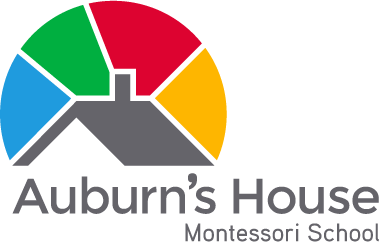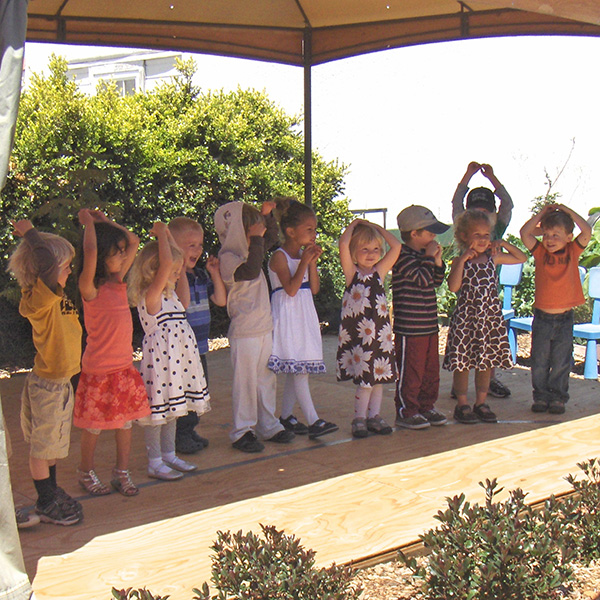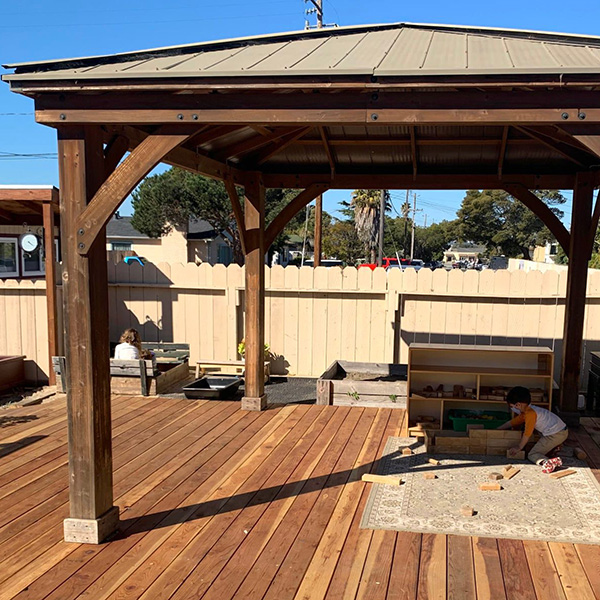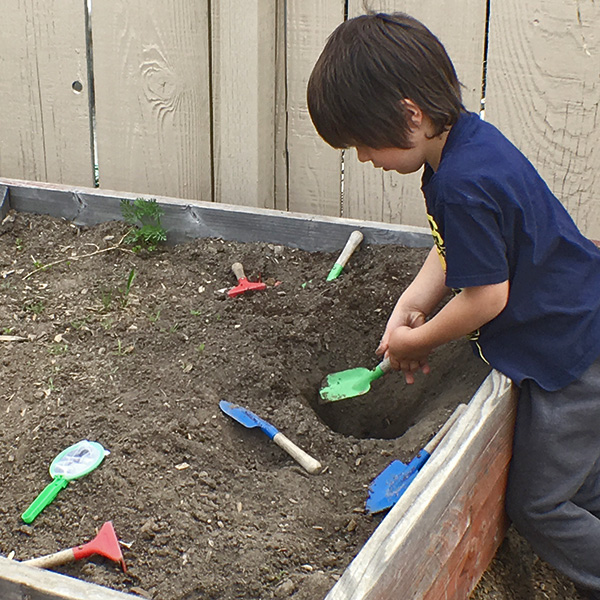A Holistic Approach to Education
The Montessori school environment is arranged according to subject area:

Learning Environment
The Montessori learning environment is much different than the traditional model. Instead of information passing from the teacher to the student, the teacher is skilled in putting the child in touch with the environment, and helping him learn to make intelligent choices and to carry out research in a prepared environment. The teacher then protects the student’s concentration from interruption. This fosters a love of lifetime learning for each child.
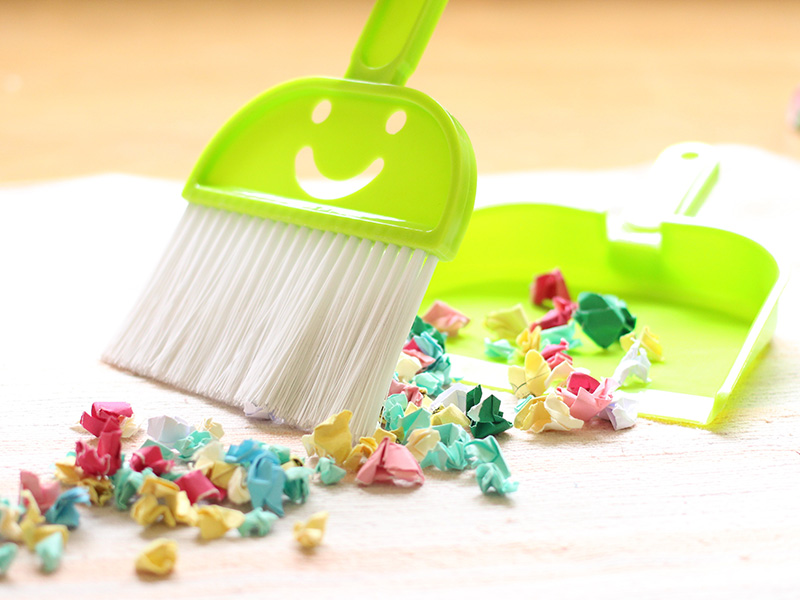
Practical Life
Practical Life provides the foundation for all other activities in the classroom, these activities such as pouring and scrubbing, sewing and gardening, or practicing grace and courtesy, gives the child confidence and mastery of the environment. Specifically, these activities contribute to the control and coordination of movement, development of concentration, and gives the child self-esteem.

Sensorial
Children from birth to age six are in their “sensitive period” for exploring the world through their senses. Sensorial materials brings order to children’s experiences, important indirect preparation for the mathematical mind. Children interact with items of different textures, colors, sizes, and geometric shapes.

Language & Communication
Children play with many oral and written language materials. The language curriculum is split up into sub categories: oral language exercises, enrichment of vocabulary, written language exercises, graphic symbols and there key sounds. Most of the materials have symbolic meaning, and gives the child a concrete foundation for grammar, reading, and preparation for writing.

Mathematics
The Montessori math lessons lead the child through progressive hands-on activities, emphasizing concepts while preparing the child for abstractions. The math materials are visual and have a tactile approach and were designed for children to self direct and understand the foundation of mathematics.
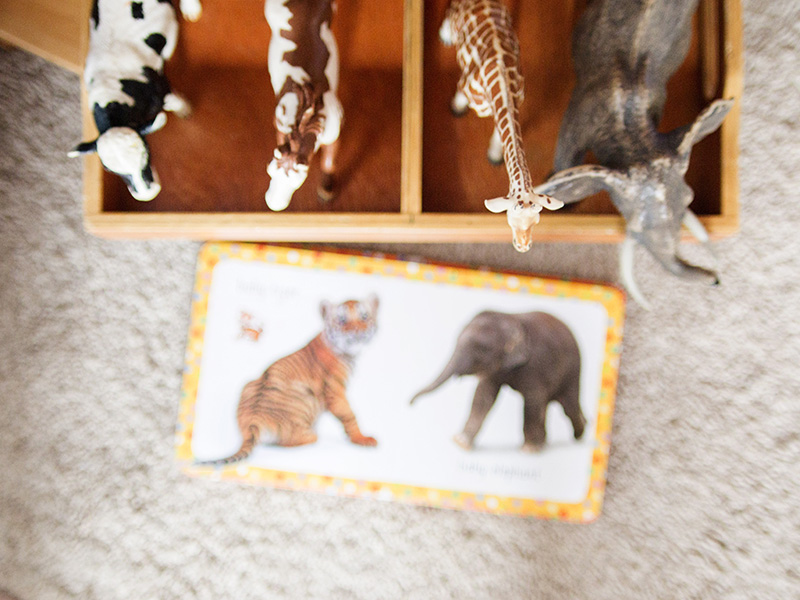
Science
The science is split into two, biological science and physical science. There are two major areas of biology. The first is zoology, which is the scientific study of animals, their structure, physiology, classification, and distribution. The second is botany, which is the study of the classification of plants, their physiology, their structure, their ecology, distribution and economic importance. Physical science is not introduced in the primary but only elementary.
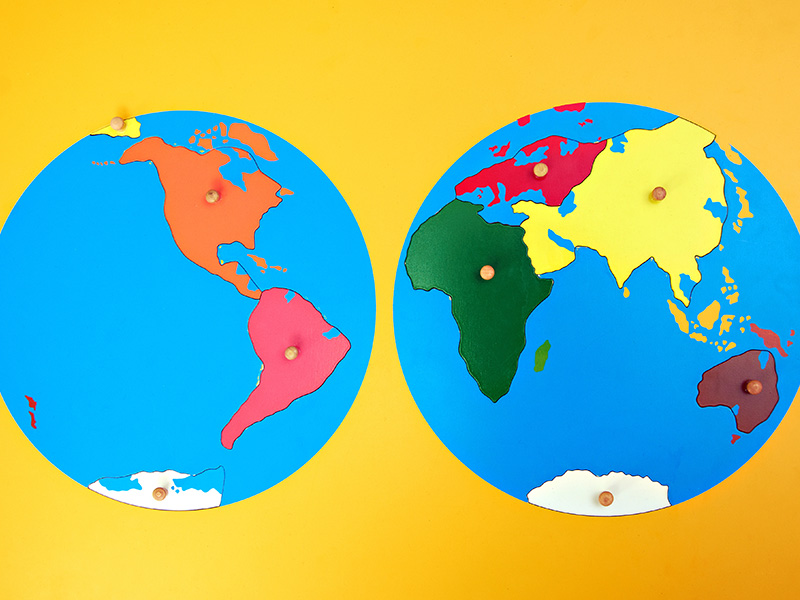
Culture
Cultural studies is combined with History and Geography. Geography goes into depth, with the study of the life of man, the way humans live, and the history of civilization. The children also study the features of the earth, and the cultures that were developed in the various parts of the world. The children learn the globe, earth, continents, before they study the countries, flags, and different cultures.
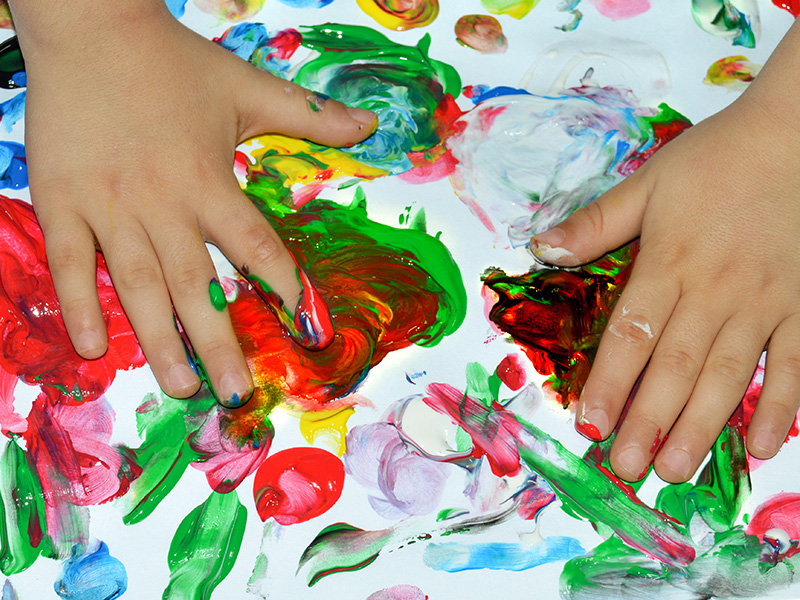
Art & Music
Art and Music is incorporated in the classroom. The children are exposed to: Drawing and coloring, painting, printing, paper work, collage, designing, etc… The children also work with rhythmic instruments, and sing songs on a daily basis. We also have a theater arts program each year.

Lifetime Learning
Children always free to move around the room instead of staying at desks. There is no limit to how long a child can work on something he or she has chosen. In the day all tasks, cooking, gardening, art, sweeping, counting numbers, reading, etc will be studied at all levels by children of different ages learning from each other, facilitated by careful observation, individual lessons and help of the teacher. This fosters a love of lifetime learning for each child.
![]()
Cooking
The Children experience the art of cooking. Many of the ingredients come from the children’s garden which brings their learning to a full circle. Each child has the opportunity to learn how to cook such as soups, salads, pizzas, muffins and many other dishes. The children learn measuring, tasting ingredients, mixing, sifting and pouring, but most of all is eating!
![]()
Gardening
The “Children’s Garden” is a key component and is based on the four seasons. Each season brings it’s weather; along with a purpose to help us learn, explore and investigate how our lives connect with nature and the growing garden. The child will experience each level of the “life cycle of the plant” from seed to fruit. Harvesting the vegetables give the children ownership for the garden and acknowledgment of how we are important to the earth and life around us.

